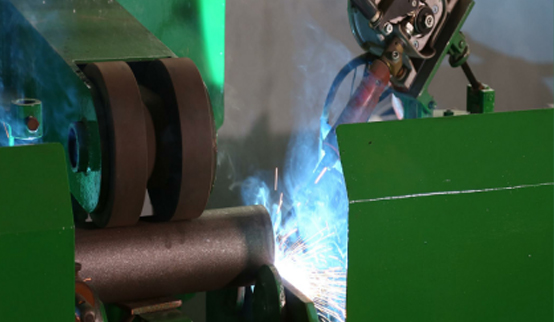 Afrikaans
Afrikaans  Albanian
Albanian  Amharic
Amharic  Arabic
Arabic  Armenian
Armenian  Azerbaijani
Azerbaijani  Basque
Basque  Belarusian
Belarusian  Bengali
Bengali  Bosnian
Bosnian  Bulgarian
Bulgarian  Catalan
Catalan  Cebuano
Cebuano  Corsican
Corsican  Croatian
Croatian  Czech
Czech  Danish
Danish  Dutch
Dutch  English
English  Esperanto
Esperanto  Estonian
Estonian  Finnish
Finnish  French
French  Frisian
Frisian  Galician
Galician  Georgian
Georgian  German
German  Greek
Greek  Gujarati
Gujarati  Haitian Creole
Haitian Creole  hausa
hausa  hawaiian
hawaiian  Hebrew
Hebrew  Hindi
Hindi  Miao
Miao  Hungarian
Hungarian  Icelandic
Icelandic  igbo
igbo  Indonesian
Indonesian  irish
irish  Italian
Italian  Japanese
Japanese  Javanese
Javanese  Kannada
Kannada  kazakh
kazakh  Khmer
Khmer  Rwandese
Rwandese  Korean
Korean  Kurdish
Kurdish  Kyrgyz
Kyrgyz  Lao
Lao  Latin
Latin  Latvian
Latvian  Lithuanian
Lithuanian  Luxembourgish
Luxembourgish  Macedonian
Macedonian  Malgashi
Malgashi  Malay
Malay  Malayalam
Malayalam  Maltese
Maltese  Maori
Maori  Marathi
Marathi  Mongolian
Mongolian  Myanmar
Myanmar  Nepali
Nepali  Norwegian
Norwegian  Norwegian
Norwegian  Occitan
Occitan  Pashto
Pashto  Persian
Persian  Polish
Polish  Portuguese
Portuguese  Punjabi
Punjabi  Romanian
Romanian  Russian
Russian  Samoan
Samoan  Scottish Gaelic
Scottish Gaelic  Serbian
Serbian  Sesotho
Sesotho  Shona
Shona  Sindhi
Sindhi  Sinhala
Sinhala  Slovak
Slovak  Slovenian
Slovenian  Somali
Somali  Spanish
Spanish  Sundanese
Sundanese  Swahili
Swahili  Swedish
Swedish  Tagalog
Tagalog  Tajik
Tajik  Tamil
Tamil  Tatar
Tatar  Telugu
Telugu  Thai
Thai  Turkish
Turkish  Turkmen
Turkmen  Ukrainian
Ukrainian  Urdu
Urdu  Uighur
Uighur  Uzbek
Uzbek  Vietnamese
Vietnamese  Welsh
Welsh  Bantu
Bantu  Yiddish
Yiddish  Yoruba
Yoruba  Zulu
Zulu types of belt cleaners
Types of Belt Cleaners Ensuring Efficient Material Handling
In the world of conveyor systems, maintaining cleanliness and operational efficiency is paramount. Belt cleaners play a crucial role in ensuring that materials are transported without contamination or buildup, which can lead to decreased efficiency and increased maintenance costs. Various types of belt cleaners are available, each suited to different applications and environments. Understanding these types can help in selecting the right system for your needs.
Primary Belt Cleaners
Primary belt cleaners are installed at the discharge point of the conveyor system. Their main function is to remove the bulk of the material that may adhere to the belt after it has conveyed its load. These cleaners are designed to handle large volumes of material and are typically made from heavy-duty materials to withstand abrasion. Common types of primary cleaners include
1. Scraper Cleaners These consist of a blade that scrapes the surface of the conveyor belt. Made from materials such as polyurethane or rubber, scraper cleaners are effective in removing fine particles and dust.
2. Steel Blade Cleaners Ideal for heavy-duty applications, steel blade cleaners offer durability and strength. However, they can be more abrasive and should be used with caution to avoid damaging the belt.
Secondary Belt Cleaners
Secondary belt cleaners are positioned further down the conveyor system, after the primary cleaners. They serve to catch any residual material that the primary cleaners may have missed. These cleaners are essential for maintaining high levels of cleanliness and preventing carryback. Popular types include
types of belt cleaners

1. Brush Cleaners These feature rotating brushes that gently sweep the belt’s surface, effectively removing fine materials. Brush cleaners are particularly useful in settings where bulk materials can easily cling to the conveyor belt.
2. Air Knife Cleaners Utilizing a high-velocity air stream, air knife cleaners remove loose material from the belt surface. They are excellent for delicate applications where traditional scraping might cause damage.
Specialty Cleaners
In addition to primary and secondary cleaners, specialty cleaners are designed for specific challenges or environments. For instance
1. High-Temperature Cleaners These are made from materials resistant to high temperatures, suitable for industries like foundry or steel manufacturing, where conventional materials might degrade.
2. Food-Grade Cleaners In food processing environments, sanitation is critical. Food-grade belt cleaners must meet strict hygiene standards and are usually constructed from stainless steel or FDA-approved materials.
Conclusion
Selecting the right type of belt cleaner is essential for ensuring the efficient operation of conveyor systems. By understanding the differences between primary, secondary, and specialty cleaners, operators can confidently choose the appropriate solution that meets their specific needs. Investing in the right belt cleaning technology not only prolongs the life of the conveyor system but also enhances productivity and minimizes maintenance costs, creating a safer and more efficient workplace.
-
Revolutionizing Conveyor Reliability with Advanced Rubber Lagging PulleysNewsJul.22,2025
-
Powering Precision and Durability with Expert Manufacturers of Conveyor ComponentsNewsJul.22,2025
-
Optimizing Conveyor Systems with Advanced Conveyor AccessoriesNewsJul.22,2025
-
Maximize Conveyor Efficiency with Quality Conveyor Idler PulleysNewsJul.22,2025
-
Future-Proof Your Conveyor System with High-Performance Polyurethane RollerNewsJul.22,2025
-
Driving Efficiency Forward with Quality Idlers and RollersNewsJul.22,2025





























